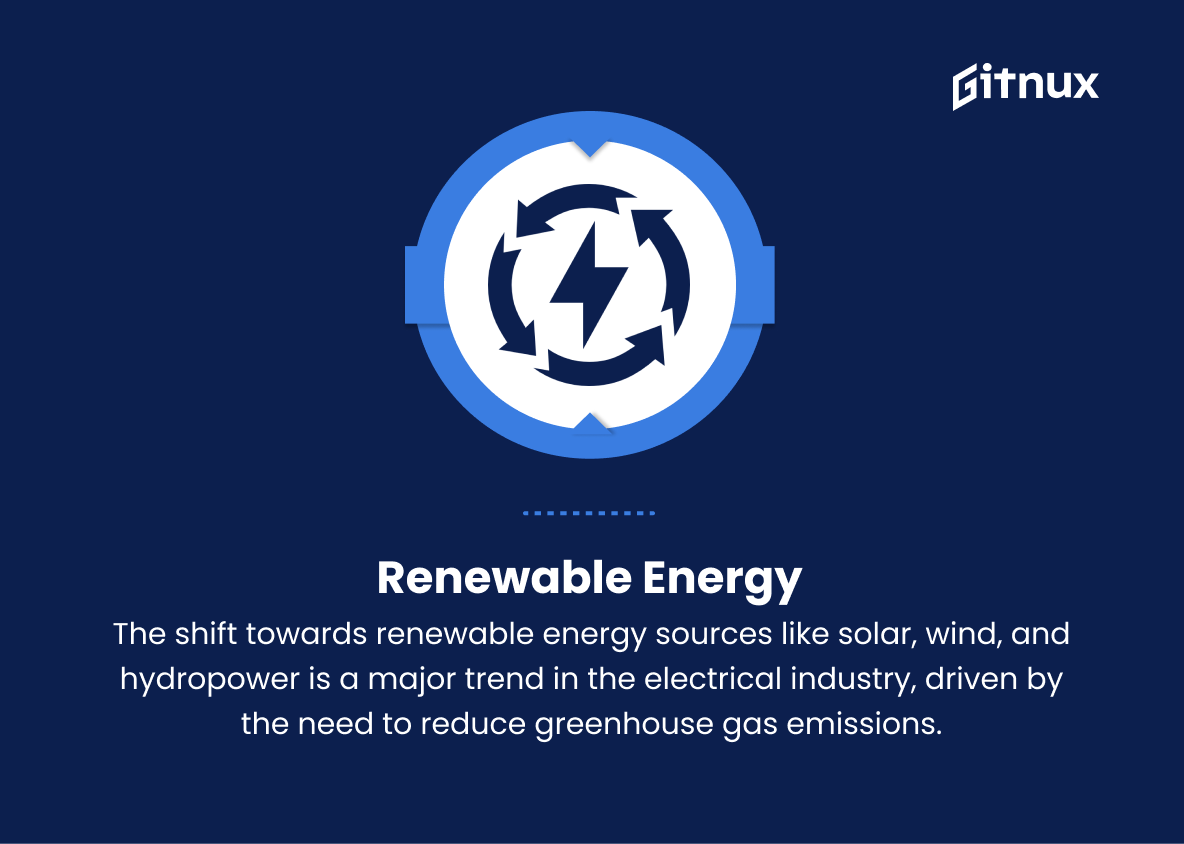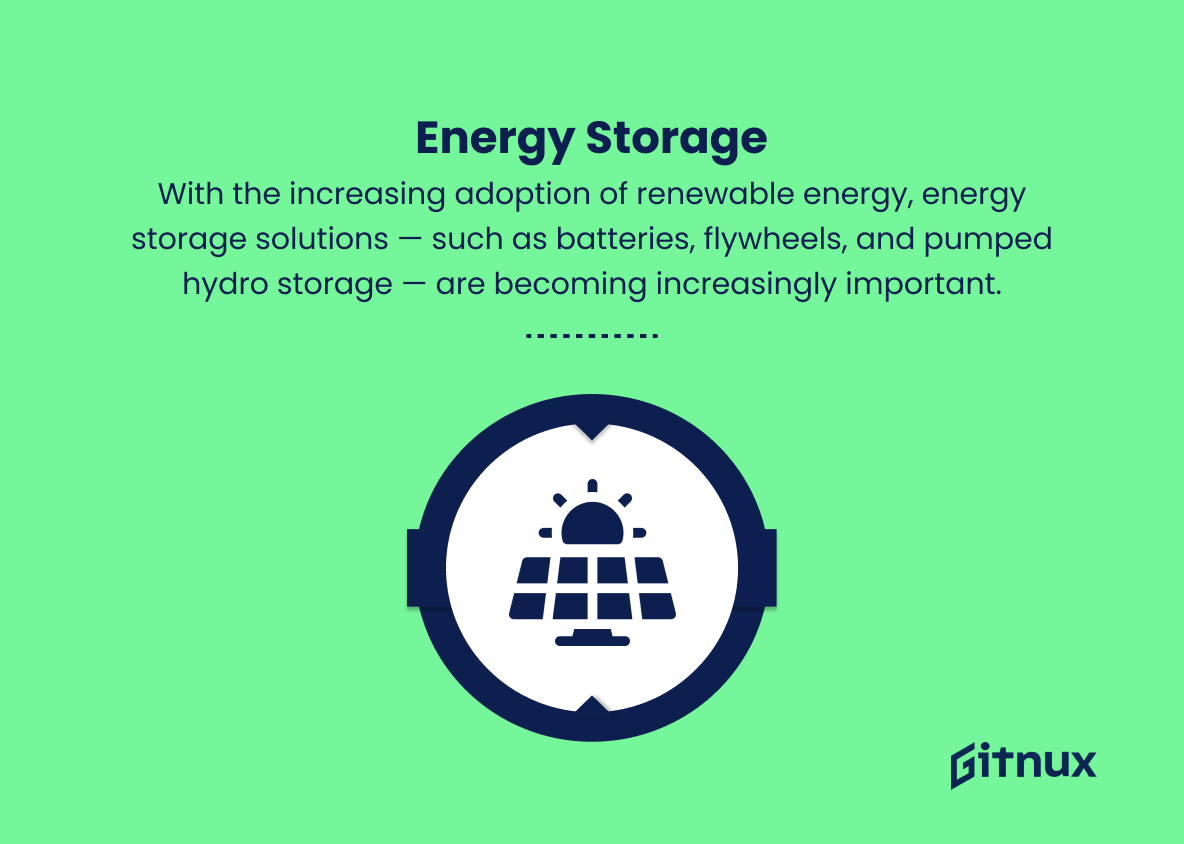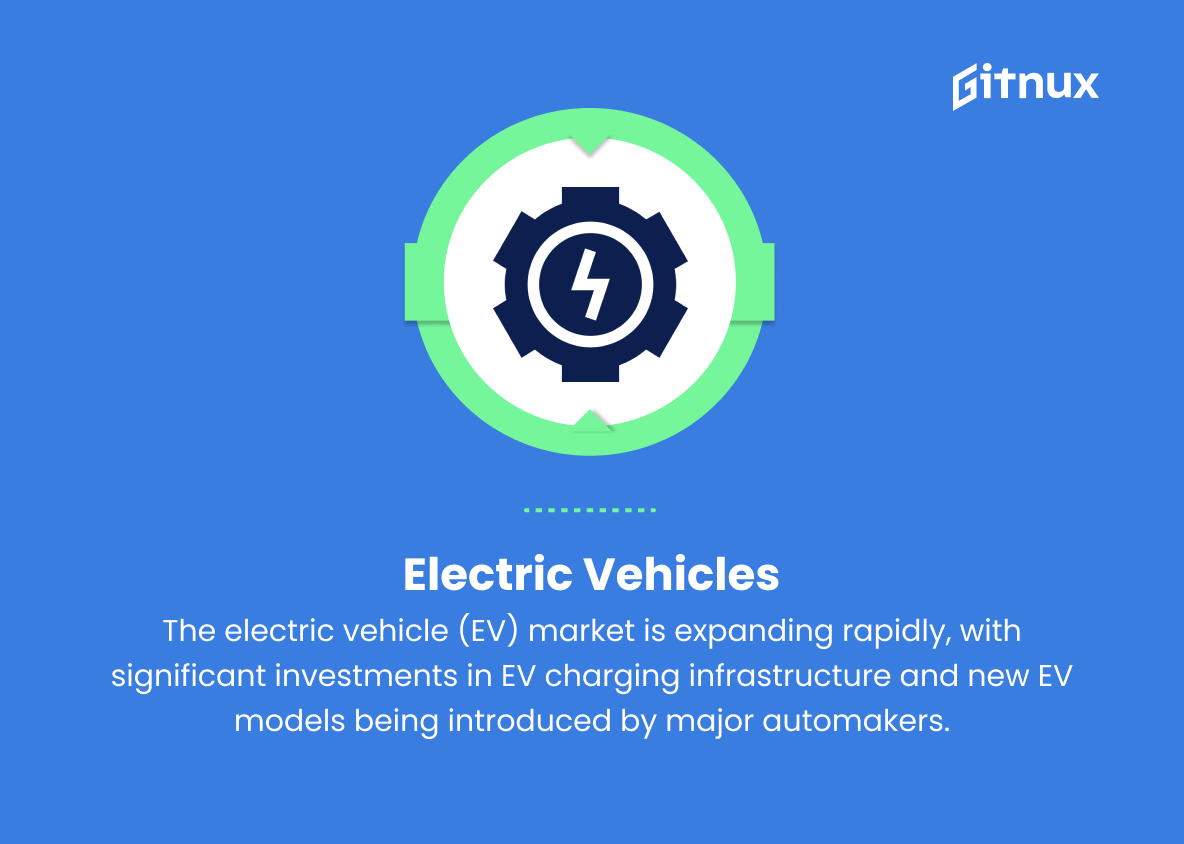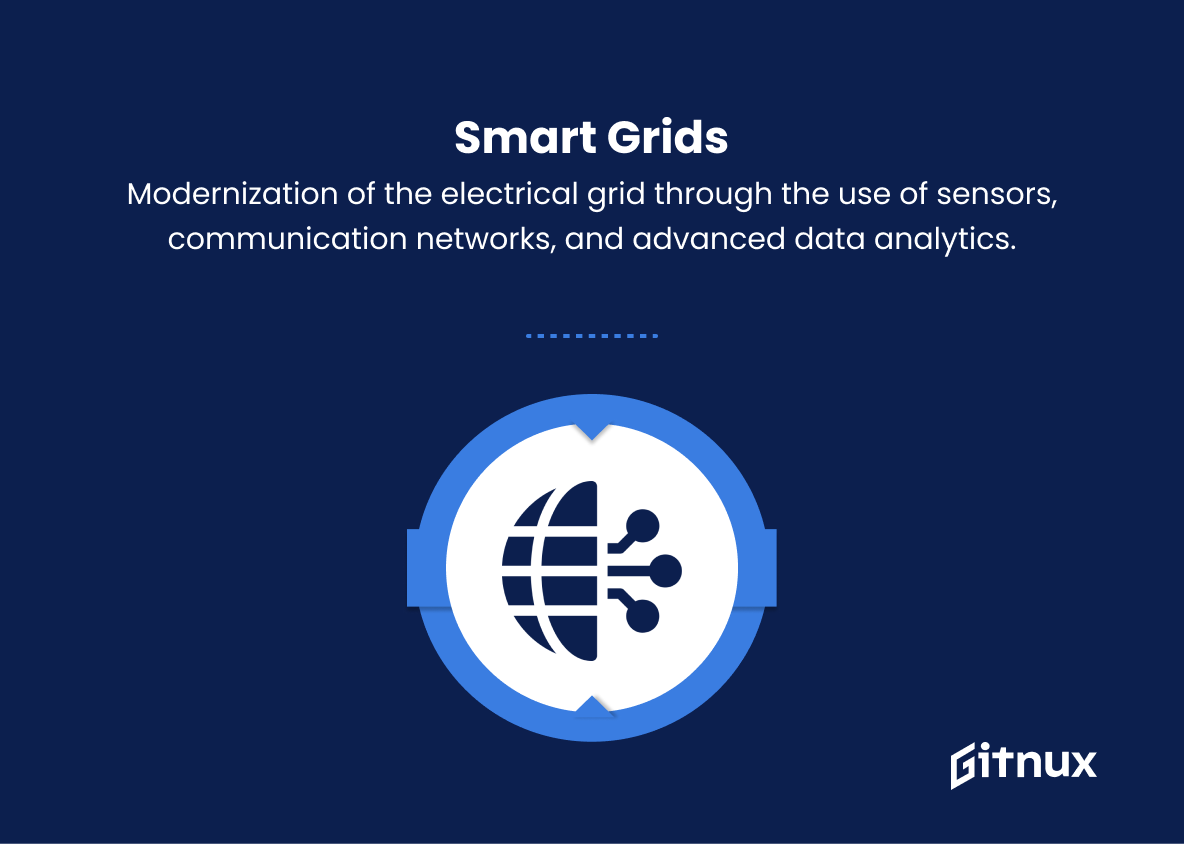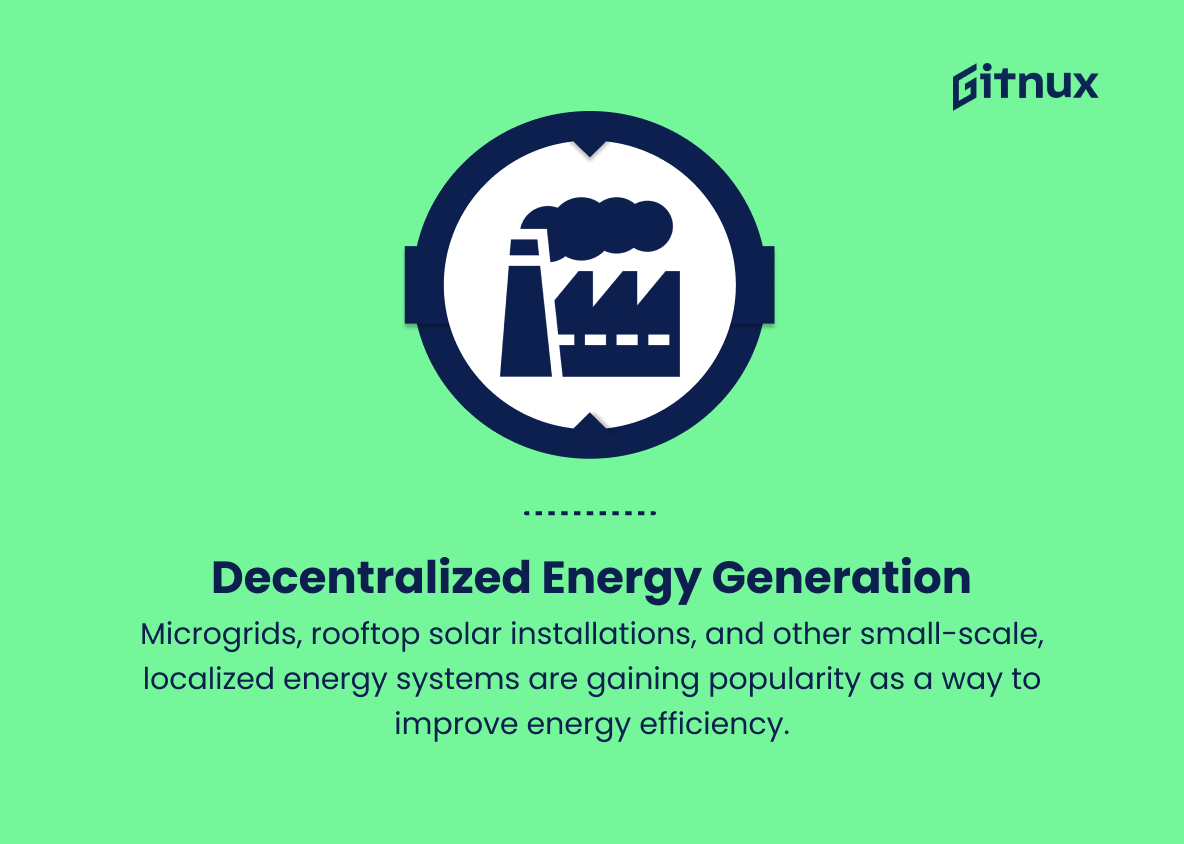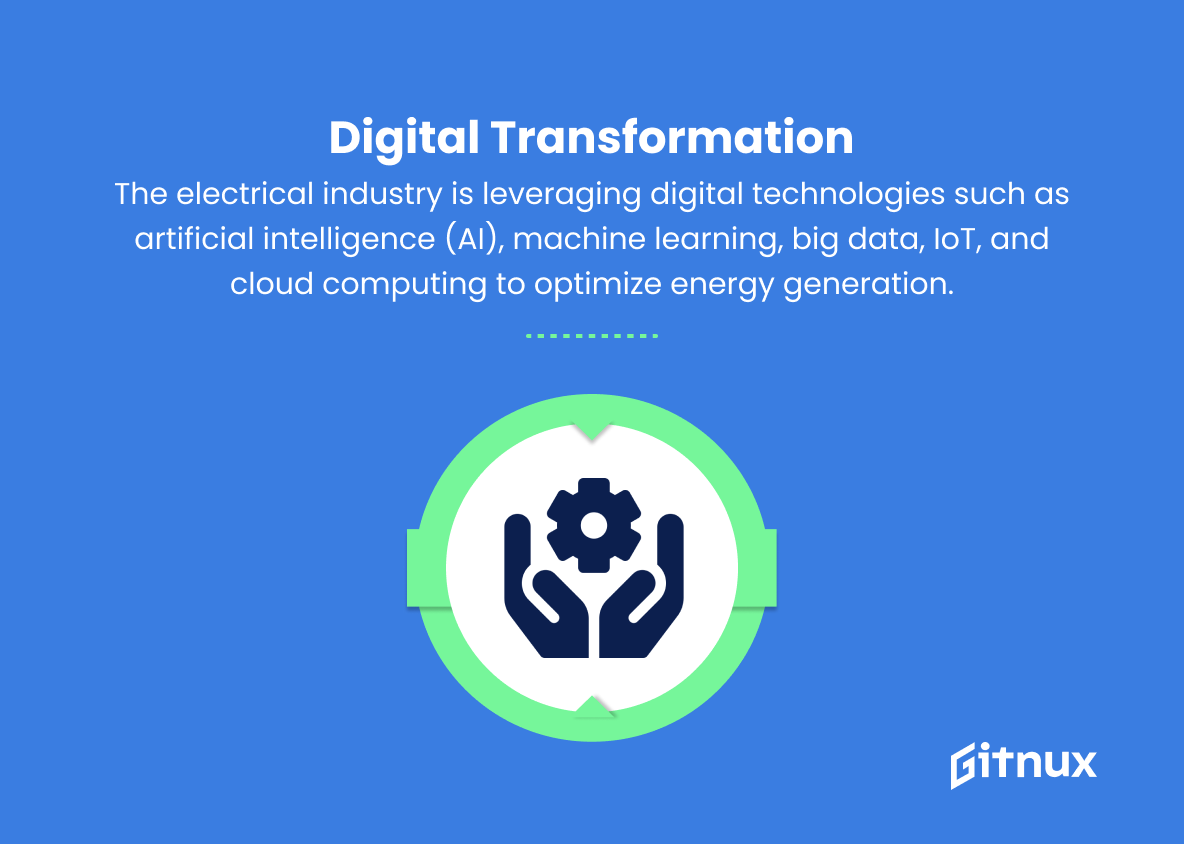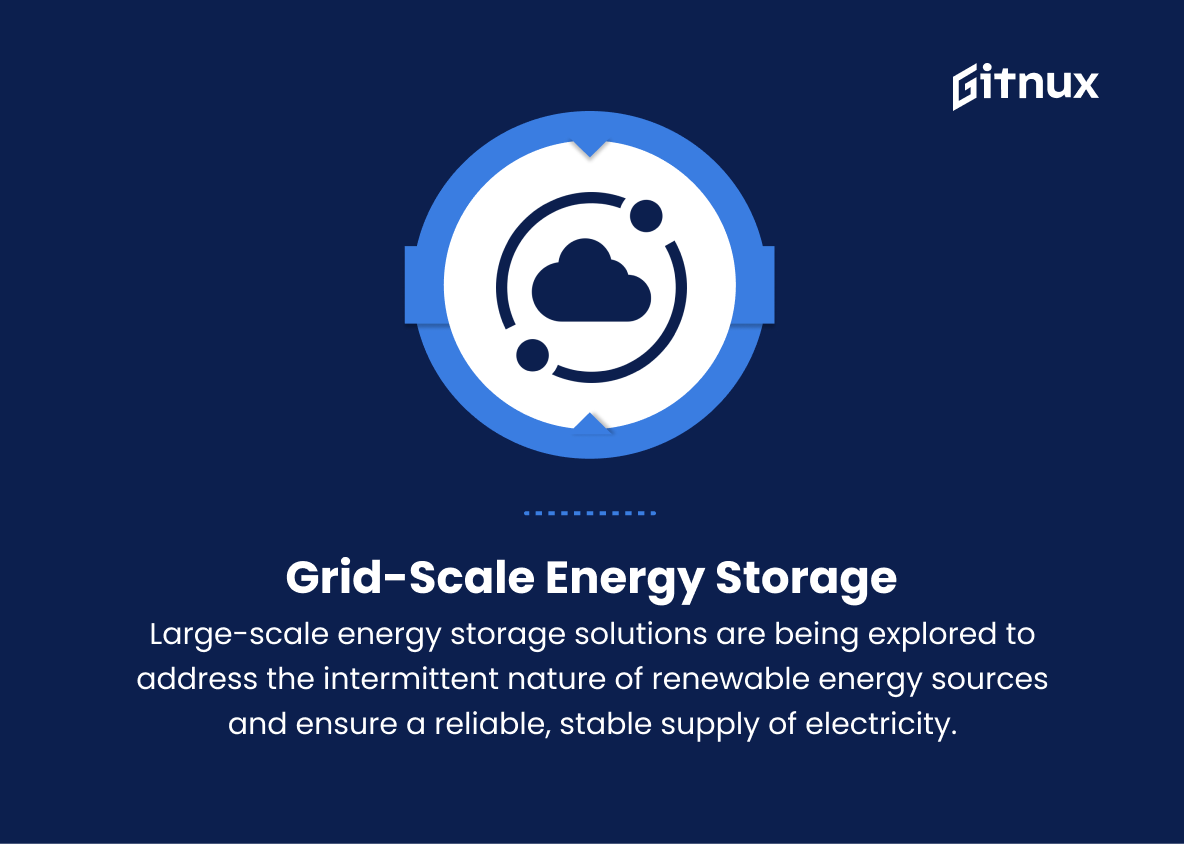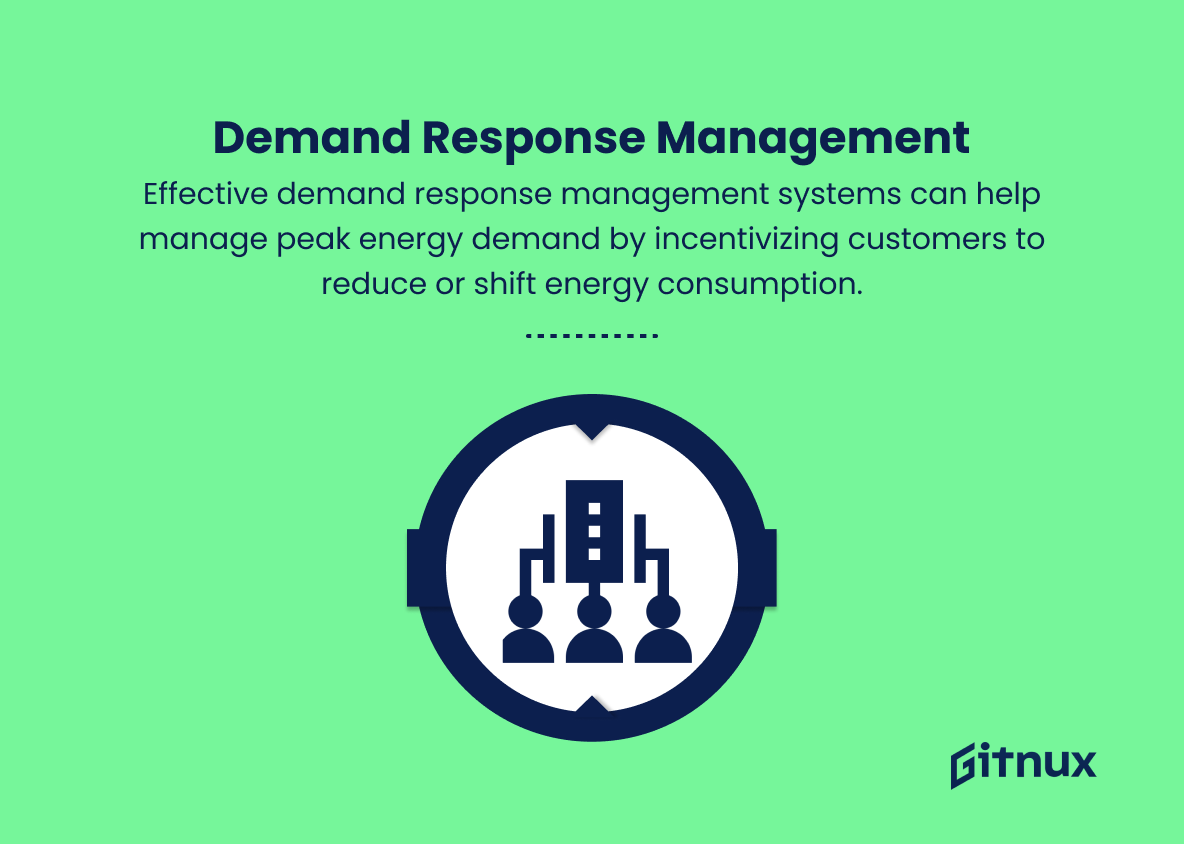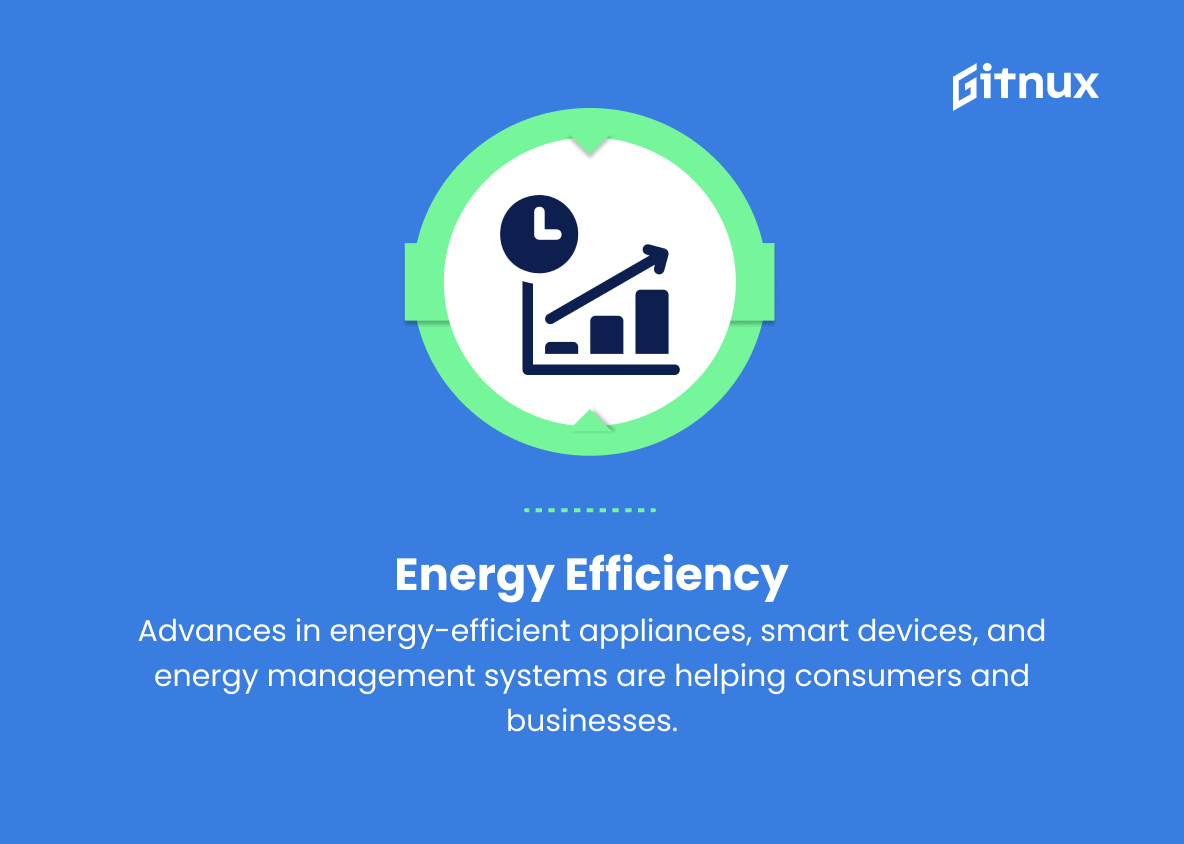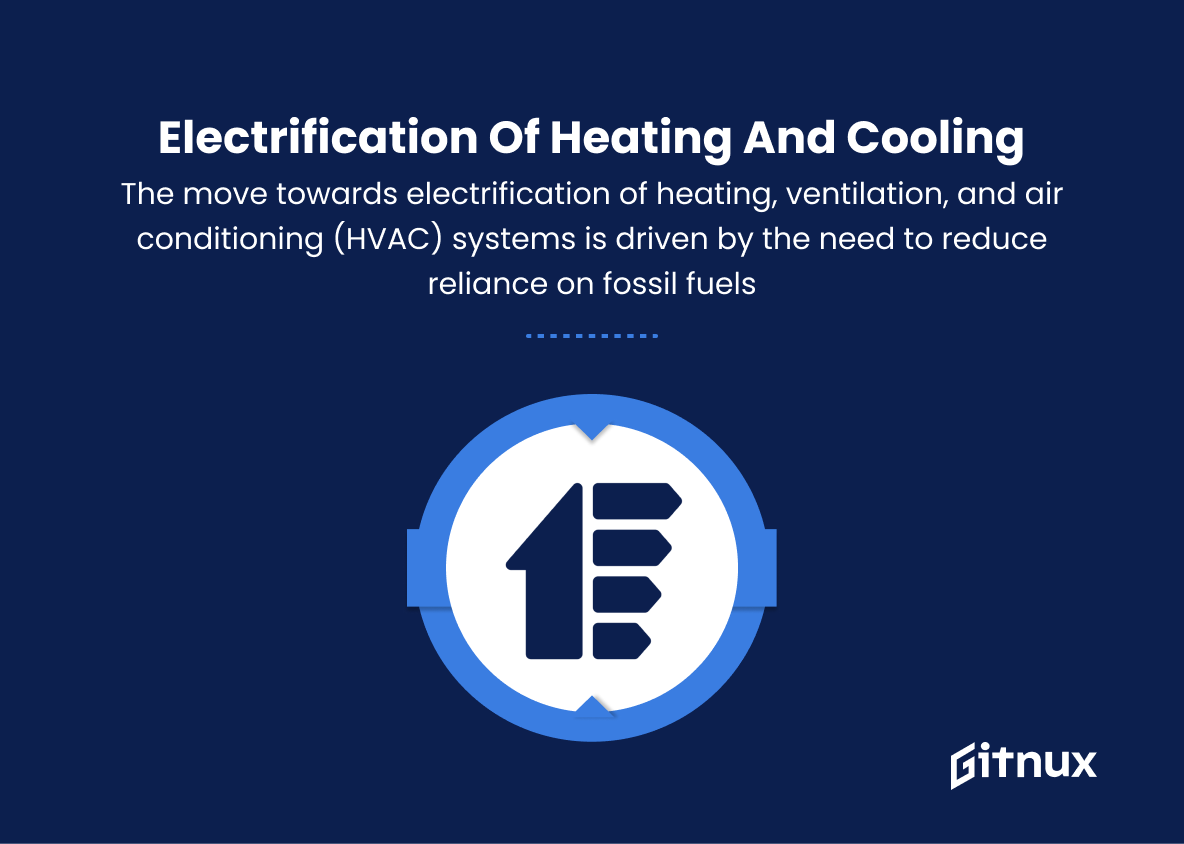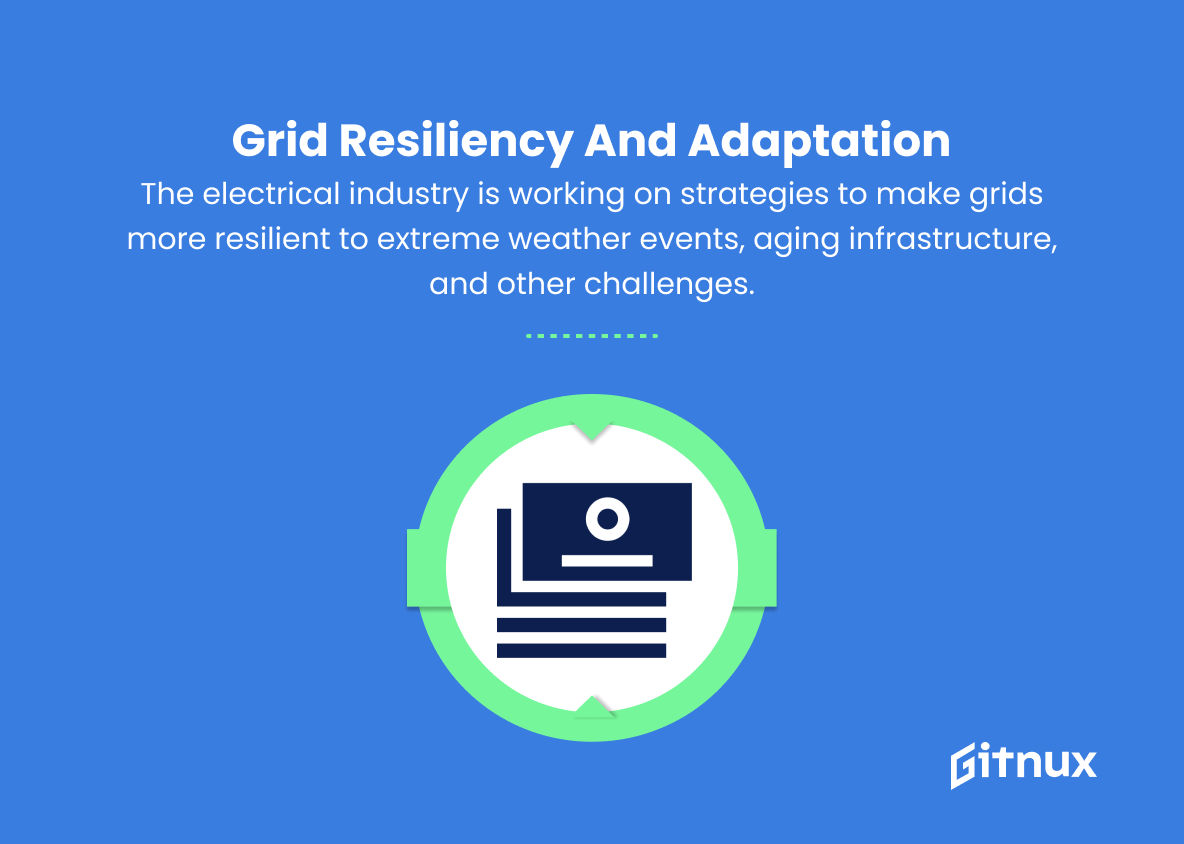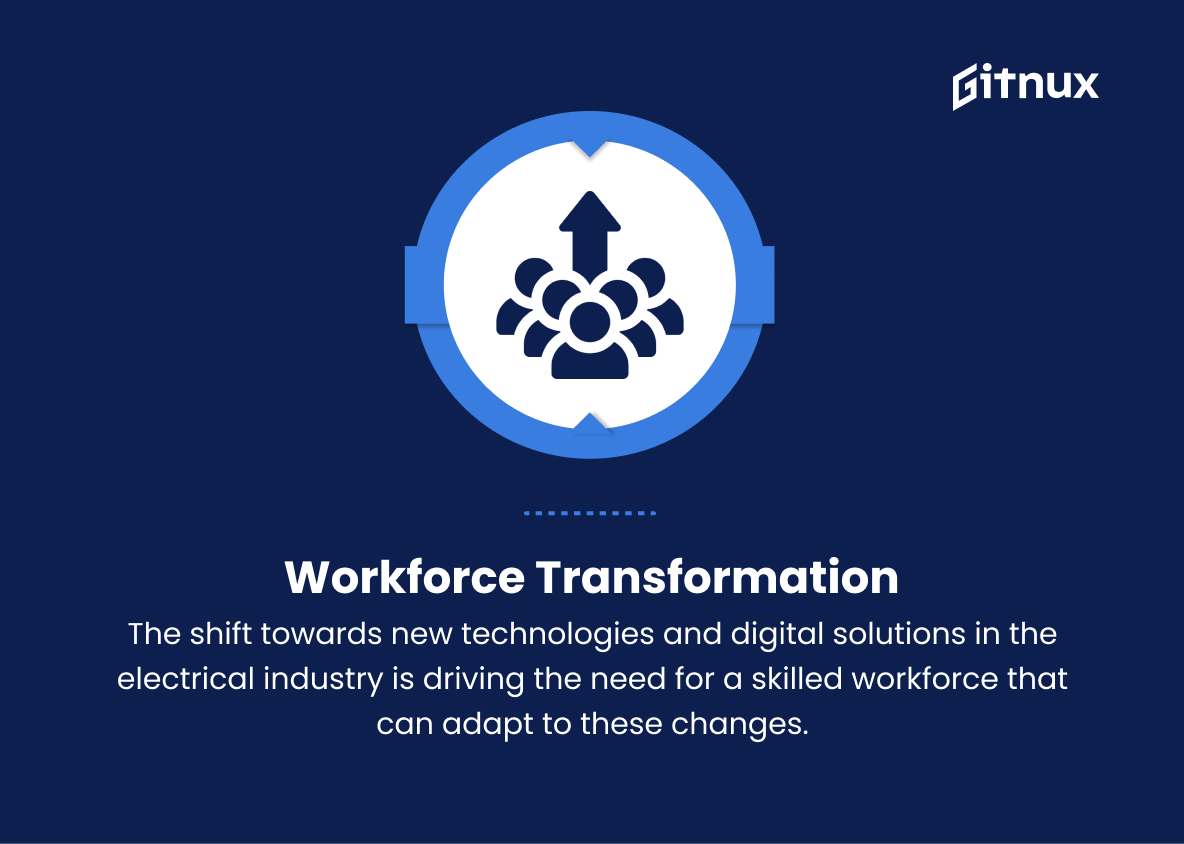As we stand on the brink of the Fourth Industrial Revolution, the electrical industry is undergoing rapid and unprecedented changes. Sweeping technological advancements, powerful market forces, and shifting consumer demands are revolutionizing the way electricity is generated, distributed, stored, and consumed. This evolution in the electrical sector is bound to reshape the world we live in, influencing economies, environmental policies, and societal infrastructures.
In this thought-provoking blog post, we delve into the most significant and transformative trends shaping the landscape of the electrical industry. From the rising prominence of renewable energy sources to the convergence of digitalization, electrification, and data analytics— join us as we illuminate the path towards a more sustainable, efficient, and connected future.
Top Electrical Industry Trends
1. Renewable Energy
The shift towards renewable energy sources like solar, wind, and hydropower is a major trend in the electrical industry, driven by the need to reduce greenhouse gas emissions and the falling costs of renewable energy technologies.
2. Energy Storage
With the increasing adoption of renewable energy, energy storage solutions — such as batteries, flywheels, and pumped hydro storage — are becoming increasingly important to balance supply with demand and ensure grid stability.
3. Electric Vehicles
The electric vehicle (EV) market is expanding rapidly, with significant investments in EV charging infrastructure and new EV models being introduced by major automakers. The growth of EVs is pushing the electrical industry to develop solutions for managing increased power demand and integrating vehicle-to-grid (V2G) technologies.
4. Smart Grids
Modernization of the electrical grid through the use of sensors, communication networks, and advanced data analytics allows for real-time monitoring, optimization, and management of electrical systems. Smart grids enable more efficient and reliable energy distribution, as well as smooth integration of renewable energy and energy storage systems.
5. Decentralized Energy Generation
Microgrids, rooftop solar installations, and other small-scale, localized energy systems are gaining popularity as a way to improve energy efficiency, reduce transmission losses, and increase resiliency against grid failure.
6. Digital Transformation
The electrical industry is leveraging digital technologies such as artificial intelligence (AI), machine learning, big data, IoT, and cloud computing to optimize energy generation, distribution, and consumption, as well as to improve predictive maintenance and extend the lifespan of equipment.
7. Grid-scale Energy Storage
Large-scale energy storage solutions are being explored to address the intermittent nature of renewable energy sources and ensure a reliable, stable supply of electricity.
8. Demand Response Management
Effective demand response management systems can help manage peak energy demand by incentivizing customers to reduce or shift energy consumption, thus contributing to grid stability and reduced energy costs.
9. Energy Efficiency
Advances in energy-efficient appliances, smart devices, and energy management systems are helping consumers and businesses reduce energy consumption and minimize their environmental footprint.
10. Electrification of Heating and Cooling
The move towards electrification of heating, ventilation, and air conditioning (HVAC) systems is driven by the need to reduce reliance on fossil fuels and increase the use of renewable energy for heating and cooling purposes.
11. Cybersecurity
As reliance on digital technologies and interconnected systems grows, there is an increasing need to address potential cybersecurity threats to critical electrical infrastructure.
12. Grid Resiliency and Adaptation
The electrical industry is working on strategies to make grids more resilient to extreme weather events, aging infrastructure, and other challenges, in order to minimize the risk of outages and ensure reliable energy supply.
13. Workforce Transformation
The shift towards new technologies and digital solutions in the electrical industry is driving the need for a skilled workforce that can adapt to these changes and contribute to the industry’s ongoing growth and innovation.
Implications
The electrical industry is undergoing significant transformation, driven by the adoption of renewable energy sources, advancements in energy storage, and the emergence of electric vehicles. The shift towards renewables such as solar, wind, and hydropower is crucial for reducing greenhouse gas emissions and capitalizing on the falling costs of these technologies. Coupled with this, the growth of energy storage solutions, both at the grid-scale and locally, helps to maintain grid stability and accommodate the intermittent nature of renewable energy generation.
As electric vehicles become more popular, the industry is finding new and innovative ways to manage power demand and integrate vehicle-to-grid technologies. Smart grids and decentralized energy generation are also improving the efficiency, reliability, and resiliency of energy distribution systems. Furthermore, digital transformation is transforming the industry by utilizing AI, IoT, and big data analytics to optimize energy generation, distribution, and consumption. These technologies also enhance predictive maintenance and extend the lifespan of equipment.
As energy efficiency becomes a priority, innovative appliances, smart devices, and management systems are being deployed across consumer and commercial sectors. Simultaneously, the electrification of heating and cooling systems is fostering a shift away from fossil fuels in HVAC. Cybersecurity is also a critical concern, as digitalization creates the need to protect critical electrical infrastructure from potential threats. Furthermore, strategies to enhance grid resiliency and adaptation are being developed to ensure reliable energy supply in the face of extreme weather events and aging infrastructure. These trends and innovations, collectively, are driving workforce transformation, necessitating a skilled workforce capable of adapting to and thriving in this new era of the electrical industry.
Conclusion
In conclusion, the electrical industry is currently witnessing a paradigm shift, driven by the rapid advances in technology, increased focus on sustainability, and changing consumer preferences. The adoption of renewable energy, smart grid systems, and the rise of energy storage technologies are all playing a significant role in shaping the industry’s future.
Furthermore, the emergence of electric vehicles and the Internet of Things (IoT) is bound to accelerate this transformation. As professionals in the field, we must stay well-informed about these trends and be prepared to adapt to the ever-evolving landscape of the electrical industry. This will not only help us to thrive as businesses, but also contribute to a cleaner, more energy-efficient future for all.
